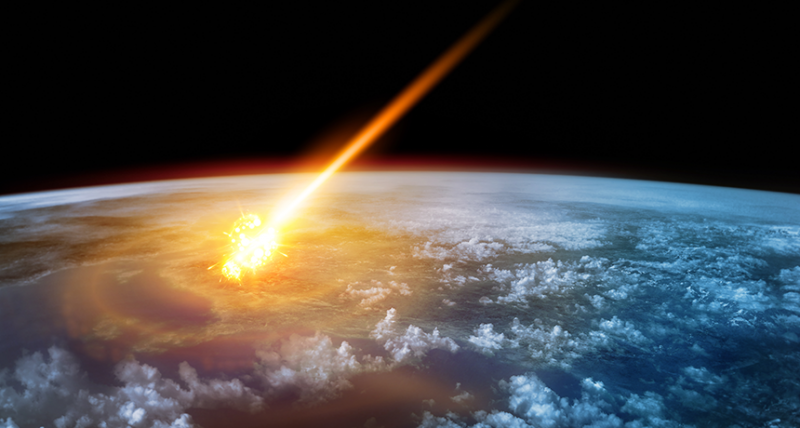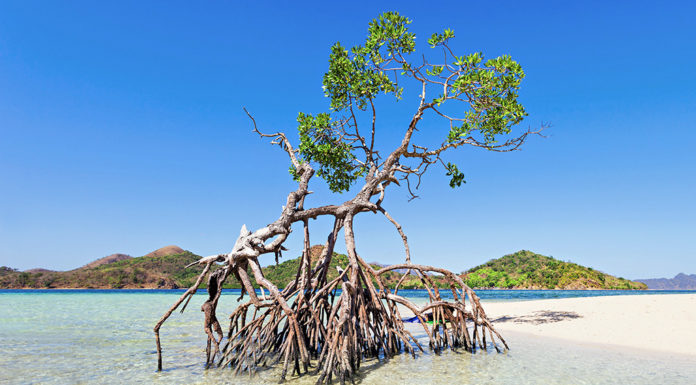The smoldering crater left by the apocalyptic space rock became a nice home for blue-green algae within years of the impact.
The asteroid moved 24 times faster than a rifle bullet as it struck Earth some 66 million years ago. Its supersonic shock wave flattened trees across North and South America, and its heat wave sparked incomprehensibly large forest fires.
The event lofted so much debris into the atmosphere that photosynthesis shut down. The non-avian dinosaurs disappeared. And nearly 75 percent of all species were extinguished.
At the point of impact, the picture was even more dire. The space rock left a sterile crater nearly 20 miles deep in what is now the Gulf of Mexico. Not a single living thing could have survived.
But even at ground zero, life managed to return, and quickly.
New findings published in the journal Geology last week revealed that cyanobacteria — blue-green algae responsible for harmful toxic blooms — moved into the crater a few years after the impact. That’s the blink of an eye, geologically speaking, and helps illuminate how life bounces back on Earth following cataclysmic events, even in the most devastated environments.
In 2016, scientists drilled into the heart of the so-called Chicxulub crater and excavated a 2,750-foot-long core of sediments, allowing scientists all over the world, such as Bettina Schaefer of Curtin University in Australia, to parse the rocks for their own research.
Those samples have answered a number of questions regarding the impact, but Ms. Schaefer wanted to better understand how life rebounded at ground zero. Although scientists had seen hints of early life before, the numbers were small and couldn’t capture the entire picture.
The issue is that not all micro-organisms leave behind fossils. Instead, soft-bodied organisms can be identified by the burrows they make and the molecules they deposit. Cyanobacteria, for example, produce fats that can be preserved in sedimentary rocks for hundreds of millions of years.
So when Ms. Schaefer’s team saw those preserved fats in the core near the time of the impact, they knew cyanobacteria must have been present. Crucially, the fats were deposited atop a layer of fossilized plants that were washed into the crater by the tsunami that followed, but below another layer of iridium that was deposited once the debris in the atmosphere rained back down on Earth after a few years. That suggests the bacteria began to populate the crater after the tsunami hit, but before the atmosphere cleared and the sun’s light had fully returned.
“The ones that were able to move in right away, the ambulance chasers, if you will, were these cyanobacteria,” said Sean P.S. Gulick, a marine geophysicist from the University of Texas at Austin, one of the co-chief scientists on the drilling expedition and Ms. Schaefer’s co-author.
Moreover, the team was able to detect a host of other organisms that arrived on the scene later, which helped to better characterize the toxic waters that pooled in the crater. Some of the molecular fossils they discovered, for example, can only originate from organisms that live in waters devoid of any oxygen — a so-called “dead zone” similar to what occurs every summer within the contemporary Gulf of Mexico.
Chris Lowery, a paleoceanographer at the University of Texas at Austin and an author on the recent study, suspects that the crater was only partially dead, in part because the team also saw evidence for fossils of plankton that rely on oxygen. Perhaps the crater’s oxygen-depleted waters existed within only certain layers of its water column. Or, like the dead zone in the modern gulf, maybe those waters were only seasonal.
Knowing that life thrived in the Chicxulub crater while it was still fresh could help scientists better understand how living things adapt to catastrophe today, said Jason Sylvan, an oceanographer at Texas A&M University who was not involved in the study.
Already, climate change has raised temperatures, depleted oxygen and acidified waters in the world’s oceans. But scientists remain unsure how microbial communities — which help control the amount of oxygen in the atmosphere — will respond.
To better forecast our future, they will continue to dig up fossils of the past — particularly those from one of the greatest extinctions on Earth.













![Hotstar Premium Cookies 2019 [*100% Working & Daily Updated*] Hotstar Premium Cookies 2019 [*100% Working & Daily Updated*]](https://tahav.com/wp-content/uploads/2019/11/Hotstar-Premium-Cookies-Free-100x70.jpg)



